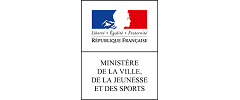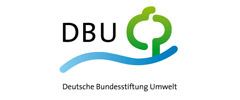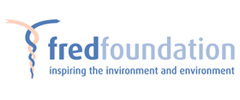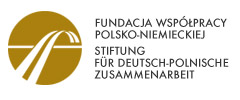Neuro-toxic Chemicals and Health Effects of Chernobyl
latest science presented at the meeting of the European Environment and Health Committee in Helsinki, 12 -13 December 2005
14.12.2005 |Sascha Gabizon

European Environment and Health Committee (EEHC)
12 –13 December 2005, Helsinki
Report by Sascha Gabizon, Director WECF for the European Eco-Forum
Sascha.gabizon@wecf.org
The EEHC mandate is to follow-up on the agreements of the Budapest Conference “Future of our Children”, June 2004.
The EEHC meeting in Helsinki consisted of 2 days, 1 day with presentations of the latest scientific evidence on Regional Priority Goal 4 “Chemicals and Radiation”, and 1 day on planning and reporting on the implementation of the Budapest committments.
Upcoming calendar:
- 30-31 March 2006, Dublin, CEHAPE meeting. Financial support is available for 2 representatives of each of the EECCA countries, and for 1 Eco-Forum representative. The theme will be Regional Priority Goal 2 “accidents, transport, urban environment”.
- Action: WECF is looking for an NGO expert on this issue.
- 15 – 16 May 2006, Oslo, EEHC meeting, theme will be RPG 2.
- Action: What experts from science and NGOs does Eco-Forum want to suggest as speakers?
- October 2006, CEHAPE meeting RPG 1 Water and Sanitation
- November 2006, EEHC meeting , RPG 1 Water and Sanitation and preparation of the inter-ministerial 2007
- June 2007, Inter-ministerial Conference, mid-term reporting. WECF / Eco-Forum would like to organise a back-to-back NGO meeting.
Summary
- Prof Grandjean (Havard) presents pre-results of largest study on neuro-toxins ever done in the US, 1 out of 6 children have defects
- EU presents its draft regulation on Chemicals, REACH, and how it will finally put the burden of proof on industry “no data – no market”
- Trade Unions present the study of Sheffield University on the economic benefits of REACH, up to 91 billion Euro’s saving just on reduction of respiratory and skin diseases among workers
- Prof Ismirov of Russia presents increases of birth defects and infertility probably related to pollution
- WECF/ Eco-Forum, presents toxic products from the next door supermarket, and asks for a strategy on improving chemical management and legislation in EECCA countries
- WHO Geneva, presents it’s controversial study of health effects from Chernobyl
- EEHC meeting discusses progress on Children’s Environmental Action Plan and planning of the inter-Ministerial 2007
Day 1: Regional Priority Goal 4 “Chemicals and Radiation
1. Chemicals
Prof Philippe Grandjean of Harvard School of Public Health gave a pre-presentation on his study which will be published shortly in the LANCET. Until the study has been published in the Lancet not all the results could be given, but those given are extremely worrying results:
- babies cordblood was tested on 400 chemicals
- the cordblood contained 206 nuero-toxic chemicals
Prof Grandjean focused on the neuro-toxic chemicals. They alter the way the human brain develops. The study found a correlation between these high levels of nuero-toxic chemicals in baby cord-blood, and an increase of brain-related disorders, in particular autism and attention deficit syndrome. These disorders are growing very fast. Already today, 1 out of 6 children in the US suffers from disorders linked to neuro-toxic chemicals. Only 5 neuro-toxins are sufficiently studied on health effects, namely lead, PCB, methylmercury, arenic and toluene. Many of the most found neuro-toxins are pesticides, but have not been sufficiently studied.
Even though we know lead should not surpass 5 mircograms per liter, this limit is exceeded in most of Europe, despite being the best documented chemical. EECCA countries are still using leaded petrol. (NB the Canadian and Australian mining lobbies have been fighting very hard against measures taken against lead, which is still found in many paints).
Grandjean started his presentation by saying to the member states representatives present at the EEHC meeting, that “they are way behind, they had not been able to protect children from hazardous chemicals and that urgent pro-active action was necessary. That chemicals are a complex issue should not be an excuse for inaction. Also, politicians should not wait for science to come with final proof. Legislative measures are necessary today to protect millions of children. These children have only 1 change in their lifetime to develop a healthy brain. It is not like with kidneys that we can continue after we lost one. The same mistake was made for lead. Even though there were already good scientific indications that lead was causing health defects in children, legislators waited another 15 years before taking action, at the cost of many healthy children’s lives. A whole generation was lead-poisoned whilst bureaucrats asked for more research!”
Grandjean said that the OECD has been developing a protocol for testing chemicals in rodents, but after 6 years this is still being reviewed, too slow. Also, REACH is an essential first step, but also does not go far enough in the type of testing needed. We need probably an international agency for the protection of the human brain!
Jack de Bruijn of DG EU Joint Research Center, European Chemicals Center presented the draft EU regulation on Chemicals, REACH, which is supposed to enter into force as of April 2007. REACH stands for Registration, Evaluation and Authorization of Chemicals. The cornerstone of REACH is that the burden of proof will be moved to industry. REACH will become legally binding for all 25 EU countries, however, it will have a world-wide effect and set new chemical standards for the coming 20 years. With REACH, companies need to proof that their chemicals have no negative health effects before getting authorization. This is the principle of “No Data – No Market”.
REACH will for the first time in the history of chemical industry try to protect human health. Before, authorities had to prove through long studies that the cancer or other health effect was caused by these and these specific chemicals, before they could stop a company selling these products on the market. With REACH this should change. However, the Chemical Industry lobby has been spending millions of Euro’s on a campaign against REACH and has been very successful in weakening the proposed EU regulation. Already 2/3 of all chemicals which should have been covered by REACH have been excluded in the first reading in the EU parliament, and took out the need for reprotoxic testing. On Dec 13th 2005, the council of Ministers further weakened the draft regulation.
Toni Musu of the European Trade Unions presented the study by the University of Sheffield on the economic benefits of REACH if it were implemented in its original, non-weakened form. REACH would save in the first 10 years 3,5 billion Euro’s in health costs from avoided occupational respiratory and skin diseases, and in the next 30 years 91 billion Euro’s. These economic benefits are much higher than the additional cost of REACH, which represents only a few percent of the Chemical Industries annual turnover. Currently hazardous chemicals cause 180.000 new cases of occupational respiratory diseases per year. This could be reduced by 50.000 each year with a full-fledged REACH.
Prof. Ismirov, Russian Federation, presented research on the decline of birth-rates and their probable link with pollution. Birth-rates are down 40% in some regions. Birth-defects are on the rise. In a very polluted area where Prof Ismirov studied children, 20% of the children were born with anomalities of the sex-organs and the skin. These children were from mothers who had lived and worked the longest in that area. We need to protect the mothers from pollution! At the same time, the legislation protecting workers from pollution is being weakened, the regulations on protection of pregnant workers are not implemented. Also, male infertility is on the rise, among others in sectors of transportation and heavy industry.
Sascha Gabizon of WECF representing European Eco-Forum said that after having heard the data of the high levels of neuro-toxic chemicals in children’s blood, and that 1 out of 6 children is already suffering damage, citizen’s want two things from their governments:
- expect the government to provide information on how as an individual they can protect their children today, immediately, from exposure to these hazardous chemicals
- expect the governments to take immediate legislative measures to protect these hazardous chemicals from contaminating our children, the first measure being to agree on a strong REACH
- First she held up a non-sticky frying pan, as the frying pans when heated sets free Perfluoro-chemicals (PFCs) including PFOA used in teflon and other non-sticky materials.
- Second she held up a perfumed candle, which the European Consumer Association have been tested to emit a.o. benzene, 25% more than from car emissions along a highway.
- Then she held up a bottle of Ajax cleaning product, which in a recent study in France had shown to emit during and 4 hours after use high levels of formaldahyde, a known carcenogen.
- After that she showed a teddybear, a toy for children, many of which are shown to contain brominated flame-retardants and in some cases pesticides.
- Then she showed grapes. Parents think they do something good by giving their children grapes in winter, but this is not the case. The EU report by DG Sanco’s food safety agency of October 2005 showed the highest exceeded levels of allowed levels of pesticide residues in grapes, up to a factor 10 higher than allowed.
- Finally she showed chocolate, of which most contain the hormone-disrupting pesticide ‘Lindane’, she showed shampoo containing the hormone-disrupting plastic softener “phthalates” and toothpaste containing parabenes.
Sascha Gabizon then presented the idea to get Support for improved Chemicals Management in EECCA countries using SAICM and REACH. Such a strategy should
- support Transition Countries to introduce chemicals legislation that:
- Incorporates and applies the precautionary principle
- protect the health of their populations – in particular the young and vulnerable groups – and workers in the chemical industry
- assist national industry in developing innovative chemical processes
- assist EECCA countries in transforming their chemicals legislation to be able to access markets with stricter chemicals legislation
- give priority action to hazardous chemicals, those that are persistent, bioaccumulative, toxic, endocrine disruptors mutagenic, carcinogenic and toxic to reproduction
- The benefits of such a strategy would be that it would:
- strengthen the capacity of EECCA countries to deal with the negative effects of man-made chemicals for human health and environment
- help to create a fair playing field for EECCA industries and help gaining access to markets with stricter chemicals legislation such as the EU
- also benefit the EU countries by increased transparency and reduction of imported chemical pollution.
The strategy should use key elements of REACH, SAICM, STOCKHOLM (POPs) CONVENTION
- REACH: no data - no market
- SAICM: polluter pays principle
- POPS: financial support mechanisms
REACH will become legally binding for the 25 EU countries, but if EECCA countries would want to adopt similar legislation support mechanisms should be developed.
SAICM already foresees in strengthening EECCA countries chemical management, even though it is not helping to implement legally binding measures. Nevertheless, SAICM can be the first step towards improved chemicals management in EECCA countries. What is SAICM?
In February 2002, UNEP’s Governing Council decided there was a need for a SAICM - The Strategic Approach to International Chemical Management
- In September 2002, the heads of state at the World Summit on Sustainable Development endorsed the SAICM initiative
- Goal: achieving, by 2020, that chemicals are produced and used in ways that lead to the minimization of significant adverse effects on human health and the environment
- SAICM should have been completed by 2005, this was blocked by a.o. the USA at the meeting in Vienna, summer 2005, and a new decision will have to be taken in February 2006 in Dubai.
Fast-track for EECCA ?
- SAICM process foresees a “fast track” process.
- Can EEHC members propose a Strategy for the EECCA region to follow the ‘fast track’ process (2007- 2009?)
- Can we add this to discussion of EEHC?
- Strategy could include support for:
- implementation of technologies,
- assessment of methodologies
- development and implementation of legislation
- creation of a specific fund, in addition to the planned SAICM fund, particularly for the EECCA region.
The co-chair of the session, Mr. Zaal Londardze, deputy Minister of Environment of Georgia, said that he believed that REACH is very important also for EECCA countries, although maybe not in the first place for regulating national chemical industry, but for getting information about chemicals in imported products. Countries like his own can not test thousands of chemicals in consumer products. Developing a strategy on SAICM requires indeed attention.
Dr. Bertolini, WHO Europe, relected on the need to develop guidelines for pre-cautionary measures on the 206 neuro-toxic substances found in cord-blood of babies. Can there be a system analogue to that used for medicines? Drugs are not tested on children, but safety margins are established. Can in the absense of a strong REACH, something similar be done for these 206 neuro-toxic chemicals? This could be done within a reasonable time-frame. WHO should review existing studies.
Russia commented that they have a recent law (nr. 995) on monitoring chemicals, but that there is no mechanism to start implementing this law.
2. Radiation
Dr. Mike Repacholi of WHO international Geneva, presented WHO’s work on radiation, including UV (sun) radiation, non-ionizing radiation and ionizing radiation from radon, medical exposure and nuclear accidents.
Ionizing radiation, the Chernobyl accident
Dr. Repacholi presented the very controversial study of WHO which says that of the 600.000 people effected by Chernobyl, 150.000 will get cancer anyway, therefore WHO does not count them as caused by Chernobyl. By eliminating all the cancers created by other causes such as smoking, only 4000 children developed thyroid cancer because of Chernobyl, and only 1000 children leukaemia. On top of that, WHO says that most of these cancers could have been prevented if these children had not been given contaminated cow-milk in the 3 weeks following the accident. WHO tried to identify what the effect of Chernobyl was on miscarriage, but this they could not find out.
Sascha Gabizon WECF / Eco-Forum, objected to the presentation by WHO. She stated that many citizen’s organisations had been very disturbed by the report of WHO, which tries to bagatalize de Chernobyl accident, and tries to make nuclear energy look safe. This supports countries like the UK and Finland, which want to build new nuclear plants, despite the fact that no sustainable solution exists for nuclear waste and decommissioned power plants. One objection is that the report has not taken into account studies from other countries. For example, the Lingkoeping University in Sweden has published research, which shows that of the 22.000 cancers, 800 can only be traced back to the Chernobyl accident. Also, the data used from the Ukraine by WHO need revision, recent studies have shown that 17.000 breadwinners have died because of Chernobyl in Ukraine alone. It is furthermore said that WHO can not publish data on health effects of ionizing radiation without approval of the Atomic Energy Agency. This undermines the good reputation of the WHO.
The WHO presentation also looked at UV. Protecting children from UV rays is very important.
- Every single sun-burn in youth increases skin cancer later in life
- Up to 80% of lifetime exposure to U.V. comes before the age of 18!
- However, there needs to be a balance, as children need vitamin D (which the body makes by exposure to light)
DAY 2: EEHC PLANNING AND REPORTING MEETING
The CEHAPE taskforce has started with great enthusiasm. Focal points from 50 countries came to the CEHAPE meeting in Edingbourg, and worked in working groups and with English-Russian translation. The recommendations and requests to the EEHC from the taskforce are:
- how to strengthen twinning activities between countries
- transfer knowledge of the burden of disease methodology to EECCA countries
- do more case studies on environmental health impacts
- involve more youth indoing the case studies
The EHIS project has received funding for it’s second phase and will futher develop the 30 selected indicators on health and environment for policy processes and technical processes.
The Netherlands delegation mentioned that even if the Ministry of Health develops a good science-based policy, it is still not easy to get it implemented if the implementation depends on another ministry. This is the case of a new regulation for the city of Rotterdam. Health studies had shown that children in schools were exposed to the equivalent dosis of up to 70 cigarettes a day from car exhausts. The new regulation stipulates speed limits near schools of max. 80 km/hr. But the ministry of transportation shows no sign of implementing this regulation.
The WHO press officer, Viv Taylor Gee, presented the new web-map, a reporting and monitoring tool for the Budapest implementation. The webmap can be found at www.euro.who.int/eehc/ctryinfo and shows for all countries in the EU and EECCA region the data on children’s environmental health, and the EEHC. Apart from contact persons at ministries and NGOs, also information about legislation, case studies and publications are on the web-map for each country.
EEN has also developed a webmap, to present the activities of the NGOs. This can be found at www.env-health.org
The next EEHC will discuss the format of reporting for the mid-term Ministerial meeting in June 2007.
14. December 2005
WECF

































